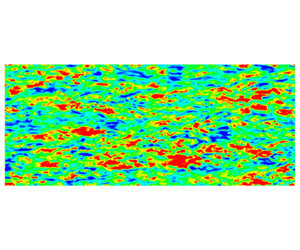Article contents
Representing surface roughness in eddy resolving simulation
Published online by Cambridge University Press: 09 June 2020
Abstract

The motive behind the present paper is to investigate a method for representing the effect of surface roughness in eddy resolving simulations of turbulent flow, without including the geometric form of the roughness as a boundary. It is found that introducing a drag force, quadratic in a reference velocity, and confined to a zone next to the wall, is remarkably possible to capture the dominant effects of roughness. The drag representation is not new; indeed, it is motivated by Reynolds averaged models. The present assessment provides a new perspective on the fluid dynamical action of distributed roughness: its dominant effect is not to create eddies in the wake of asperities, or to provide a geometric obstruction. The drag model, with no geometrical features, suppresses streaks that occur over smooth walls, and generates large, outer region eddies, in a quite similar way to resolved roughness. In a sense, this is an expanded perspective on Townsend’s hypothesis. As in that hypothesis, Reynolds stresses scale on friction velocity; but, expanding on the original hypothesis, spectra over the forcing layer agree closely with those over resolved roughness, when the force is calibrated to produce the same friction Reynolds number as the resolved roughness.
JFM classification
- Type
- JFM Papers
- Information
- Copyright
- © The Author(s), 2020. Published by Cambridge University Press
References
- 15
- Cited by


